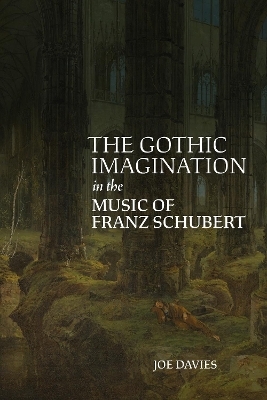
The Gothic Imagination in the Music of Franz Schubert
Seiten
2024
Boydell & Brewer (Verlag)
978-1-83765-162-7 (ISBN)
Boydell & Brewer (Verlag)
978-1-83765-162-7 (ISBN)
Offers a major new contribution to understanding Schubert's creative approach and the gothic imagination more generally.
This book illuminates Franz Schubert's engagement with gothic discourse at the intersection of music, literature and the visual arts. Ideas of the gothic provide a framework for contextualizing the myriad ways in which Schubert's music evokes the blurring of past and present, life and death, and for situating strangeness in relation to a cross-disciplinary phenomenon that captivated the imagination of the time.
The study traces the gothic from Schubert's early songs, where its presence is well established, to the instrumental music of his final years. These dialogues speak to shifting associations across chronological boundaries; their traces undergo change, returning in altered contexts - from fleeting disturbances, a rhythmic shudder or a tremolo figuration, to prolonged outbursts and disjuncture. The gothic is at times linked explicitly to death, as in Schubert's graveyard settings, and at other times implied through doubles and distortion, nocturnal imagery, or hybridity and metamorphosis.
The Gothic Imagination in the Music of Franz Schubert offers new interpretations, grounded in close reading of musical and poetic material, that move beyond the ghostly and macabre towards a world wherein death, the sublime and grotesquerie are intricately entwined. The book therefore provides for a major new contribution to understanding Schubert's creative approach and the gothic imagination more generally.
This book illuminates Franz Schubert's engagement with gothic discourse at the intersection of music, literature and the visual arts. Ideas of the gothic provide a framework for contextualizing the myriad ways in which Schubert's music evokes the blurring of past and present, life and death, and for situating strangeness in relation to a cross-disciplinary phenomenon that captivated the imagination of the time.
The study traces the gothic from Schubert's early songs, where its presence is well established, to the instrumental music of his final years. These dialogues speak to shifting associations across chronological boundaries; their traces undergo change, returning in altered contexts - from fleeting disturbances, a rhythmic shudder or a tremolo figuration, to prolonged outbursts and disjuncture. The gothic is at times linked explicitly to death, as in Schubert's graveyard settings, and at other times implied through doubles and distortion, nocturnal imagery, or hybridity and metamorphosis.
The Gothic Imagination in the Music of Franz Schubert offers new interpretations, grounded in close reading of musical and poetic material, that move beyond the ghostly and macabre towards a world wherein death, the sublime and grotesquerie are intricately entwined. The book therefore provides for a major new contribution to understanding Schubert's creative approach and the gothic imagination more generally.
JOE DAVIES is Marie Skłodowska-Curie Global Fellow at Maynooth University and the University of California, Irvine. He is editor of Clara Schumann Studies (2021), guest-editor of the special journal issue 'Clara Schumann: Changing Identities and Legacies' (2023), and co-editor of Drama in the Music of Franz Schubert (Boydell Press, 2019).
List of Illustrations
Foreword
Nina Scolnik
Acknowledgements
Introduction: Schubert and the Gothic
1 Songs of the Grave
2 Doubles and Distortions
3 Songs of the Night
4 Grotesquerie
Epilogue
Select Bibliography
| Erscheinungsdatum | 22.02.2024 |
|---|---|
| Zusatzinfo | 3 b/w illus and 66 music exx. |
| Verlagsort | Woodbridge |
| Sprache | englisch |
| Maße | 156 x 234 mm |
| Gewicht | 438 g |
| Themenwelt | Kunst / Musik / Theater ► Musik ► Klassik / Oper / Musical |
| ISBN-10 | 1-83765-162-0 / 1837651620 |
| ISBN-13 | 978-1-83765-162-7 / 9781837651627 |
| Zustand | Neuware |
| Haben Sie eine Frage zum Produkt? |
Mehr entdecken
aus dem Bereich
aus dem Bereich


